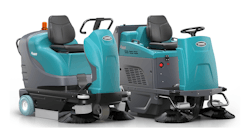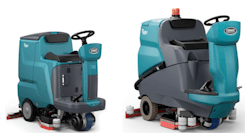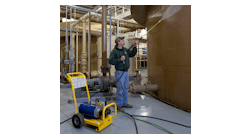Whittaker Rolls Out Five Tips for Selecting Carpet Care Machines
On March 18, Whittaker released five recommendations for in-house custodial teams and building service contractors to consider when selecting carpet care equipment.
“With reliable equipment and effective chemistry in place, facilities can maintain the luster and color of their carpet, and properly address spills and stains,” said Joe Bshero, director of technical services at Whittaker. “Careful carpet care machine selection is key, as different environments and custodial teams have different needs.”
Consult the following best practices when considering new carpet care equipment:
Determine which method to deploy. To narrow the field, first assess which carpet cleaning strategy you want to follow. For example, many facilities conduct interim maintenance using low-moisture encapsulation. This process is safe, sustainable and cost effective. The right machine paired with high-quality chemistry can successfully target surface soils and embedded contaminants like dirt, salt and dander.
Review published productivity rates. Labor is often the biggest expense related to facility maintenance. Maximizing productivity with a properly sized machine is key. Consider the square footage of the facility and compare this figure to the manufacturer’s published productivity rates for its machines. This will give you a better sense of the time needed to complete carpet cleaning.
Note any obstructions that present challenges. Machines with wider widths can clean faster but it’s important to assess if the machine can adequately fit around obstructions like furniture. It’s possible that your team may need a machine with a smaller width to navigate tight spaces. For more expansive areas, employees can use a larger machine capable of cleaning more carpet per hour.
Consider features that support employee wellbeing. To make carpet care quicker and more enjoyable for employees, confirm if the machine has features that enhance efficiency and ergonomics. Larger solution tanks require less frequent filling, and those that are mounted to the machine make operation easier. The machine should have simple controls and be lightweight to reduce strain and stress associated with repetitive motions. Collection hoppers store debris for removal when carpet care is complete.
Think about long-term needs. Building service contractors may need additional machines as the number of employees grows and new contracts are secured. Meanwhile, in-house cleaning crews may expand carpet care responsibilities to address newly installed flooring. It’s essential to partner with a manufacturer that can scale with your operation. Take a closer look at the level of support the company provides, the maintenance and repair process and the overall quality of both the machines and the chemistry. Reviewing industry affiliations and third-party certifications can be helpful when vetting a supplier.
“Clean carpet communicates that a facility cares about its occupants and visitors,” added Bshero. “By following these recommendations, organizations can keep carpet looking its best and prolong its lifespan, thereby supporting brand reputation, sustainability initiatives and the bottom line.”




